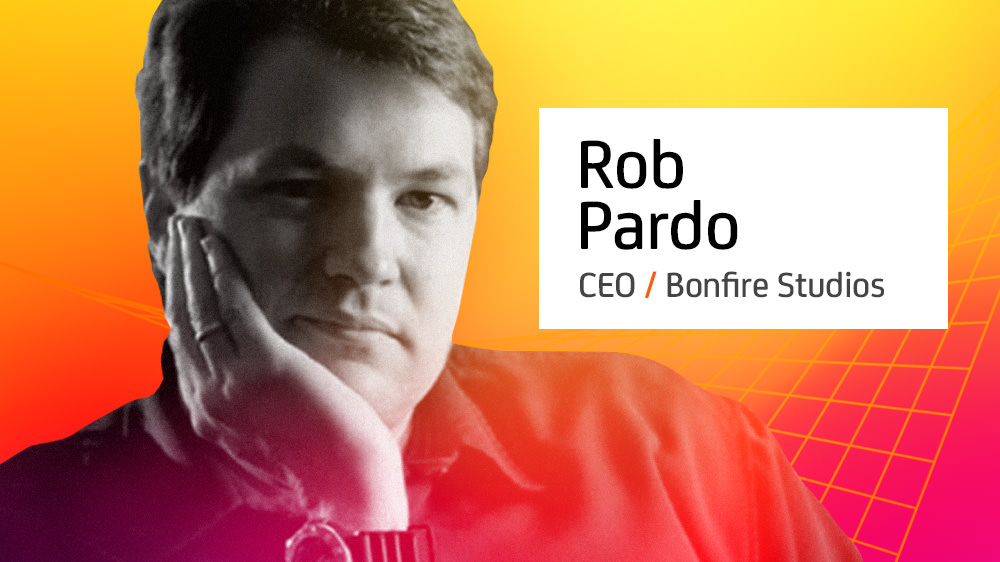Rob Pardo spent 17 years creating games at Blizzard Entertainment before the former chief creative officer left three years ago to explore new opportunities. Last year, Pardo raised $25 million and co-founded Bonfire Studios, an Irvine-based startup that’s working on an unannounced original game. He is also making his first public speaking appearance since launching his new studio at the View Conference, which takes place in Turin, Italy on October 23-27.
Pardo talks to AListDaily about the lessons he learned in game development, the opportunities new technology has opened up for small teams and how Hollywood and the video game industry have helped push storytelling forward in this exclusive interview.
What made you decide to speak at the View Conference and what will you be discussing in your keynote?
It started with Maria Elena (View Conference director) reaching out the last couple of years. I generally resist doing much international travel, but the conference has always been on my radar. I spoke with a fellow entrepreneur up in Silicon Valley, Maureen Fan (Baobab Studios) and she loved the experience she had at View. Even though I’m a homebody, I do like to go out and see what the different communities are like out there in the US or internationally. I’ve spoken at conferences in France and Australia in the past. [At View] I’ll look back at my time at Blizzard and be reflective of my time there. I’ll tease out some of the lessons learned along the way. It’s essentially a love letter to Blizzard because it was a special time in my career. Hopefully, some of those things will help other people and inspire them to do great things.
What has it been like starting up again with Bonfire Studios?
It’s been awesome. I’m sure if you fast forward five years there will be some war stories, but right now we’re in the early honeymoon phase. We’ve been operating for a year now and I’m learning a lot again. While I was fortunate to be at Blizzard when it really grew and scaled, I never got to be there from 0 to 50 employees, but at Bonfire I’m learning how to do new things every day. There’s a whole adventure to it again and it’s been great working with a small group again. Blizzard has a lot of phenomenal people across the company, but I wouldn’t get to work with them except for occasionally in small group settings. It’s great to be making games again instead of making new departments.
What new opportunities are there for Bonfire Studios in the gaming space?
We’re in a new golden age in the game industry because there’s so much great technology that enables small teams to build games. Whether it’s using game engines or creating assets or using Amazon web services to host a game, it allows us to build a small team out to make a great game experience. We just hit 12 employees total and we’re all in the same room. We just hired a new illustrator and artist and have some concept stuff up on the website.
When will you be talking about your first project?
I learned lessons in the old days that it’s better to wait until we’re far along in the development process before talking.
What did you learn about Hollywood movie-making through working on the Warcraft film with Legendary Entertainment?
There are a lot of challenges when adapting a game into a film. I was a co-producer on the Warcraft movie. Fundamentally, most games that turn into movies are based on a non-linear story narrative or an IP or universe, not an actual three-act structured story. One analogy for Warcraft was that there’s not one story with one group of characters. Warcraft is like the Marvel Universe with its own chronology, different characters and heroes. The question was where do you shine the spotlight and what two-hour story do you create out of it? That’s extremely challenging. I’m really proud of what we were able to get onto the screen. The movie looks like a Warcraft movie. That’s one of the first challenges you have in adapting a game.
How did director Duncan Jones being a gamer help with this adaptation?
That’s always positive, and you have a couple different challenges. You have to make a great movie, but you also need to make something that connects with the fans and does justice to the universe. You have to be part of the game community to understand that universe and that connection.
How have you seen the video game and movie industries push new technologies forward, like with performance capture, which is now a staple of most big games?
There are gaming companies with a more mo-cap focus, and some Hollywood studios with a more traditional computer animation focus. But they’re all very interlinked with character performance. As a game developer, you’re always looking at the film effects and what they’re doing with characters. And as games have gotten more advanced, more visual effects companies are looking at what the top game companies are doing.

